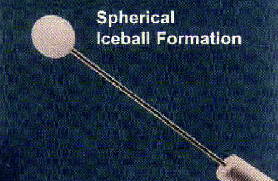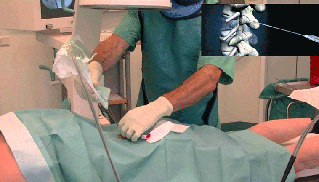Cryoablation under Fluoroscopy
Cryoablation is a procedure used to treat neuropathic pain like post herpetic neuralgia, Morton’s neuroma in the foot or neuropathic knee pain. The procedure uses a hollow needle under fluoroscopy as a guide to freeze a painful nerve and block or prevent the transmission of the pain signal to the brain. This procedure can provide long lasting pain relief, 6-12 months or even longer in some cases. Cryoablation uses ice crystals to create vascular damage to the vasonervorum, which produces severe endoneural edema. Cryoablation disrupts the nerve structure and creates degeneration, but leaves the myelin sheath and endoneurium intact. The nerves will eventually regenerate and pain signals will return and travel to the brain causing a return of pain again.
Cryoablation uses medical-grade nitrous oxide to generate extremely cold temperatures to selectively destroy nerve tissue. Ultrasound guidance and nerve stimulator guidance are used to increase the effectiveness of the treatment by ensuring the correct placement of the probe tip to mitigate nerve damage. Pain relief is often immediately felt, but in some cases, cryoablation can also take up to 2 months for full pain relief to be achieved.
Cryoablation (or cryosurgery) involves very cold temperatures, therefore contraindicated and not recommended for patients with poor circulation, peripheral vascular disease or conditions such as Raynaud’s Phenomena.


